Pixie cut
A pixie cut is a short hairstyle, generally short on the back and sides of the head and slightly longer on the top, with very short bangs. It is a variant of a crop. The name is derived from the mythological pixie.

History
Pixie cuts were popularized first in the 1950s when Audrey Hepburn wore the style in her debut film Roman Holiday, and later in the 1960s by actress Mia Farrow (notably in Roman Polanski’s Rosemary's Baby), British supermodel Twiggy, and then even later by Laugh-In star Goldie Hawn.[1] Jean Seberg also sported a pixie cut for Otto Preminger's Bonjour Tristesse and Jean-Luc Godard’s Breathless.[2]
The crop became fashionable again in the late 1970s and 1980s, with one of its most notable wearers being the actress Jacqueline Pearce in the British TV series Blake's 7. The crop also was big in the mid 1990s, as worn by waif model Lucie de la Falaise, and Madonna in her 1993 tour The Girlie Show. Halle Berry appeared in the 2002 James Bond film Die Another Day wearing a crop. Pixies are very easy to maintain and can be worn casually, or dressed up for special occasions.[3]
In popular culture
Columnist Pamela Hutchinson notes that the pixie hairstyle is often portrayed in films in a negative way, usually had when actors play characters that have been traumatized, imprisoned or are undergoing cancer treatment.[2]
Gallery
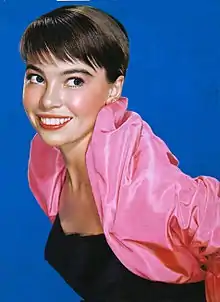 Leslie Caron with a pixie cut, 1953
Leslie Caron with a pixie cut, 1953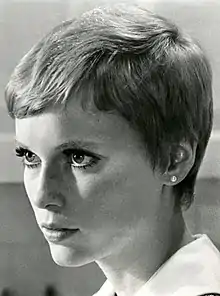 Mia Farrow with a pixie cut, 1968
Mia Farrow with a pixie cut, 1968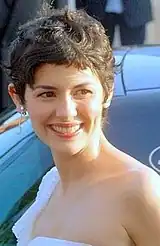 Audrey Tautou with a longer pixie cut, 2006
Audrey Tautou with a longer pixie cut, 2006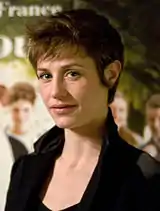 Cécile De France, pixie cut with a longer fringe, 2009
Cécile De France, pixie cut with a longer fringe, 2009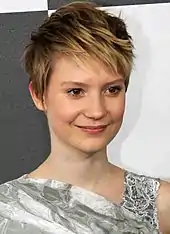 Mia Wasikowska, 2010
Mia Wasikowska, 2010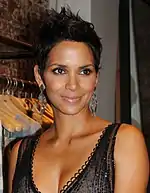 Halle Berry, medium length pixie cut, 2010
Halle Berry, medium length pixie cut, 2010_(cropped).jpg.webp) Michelle Williams, 2012
Michelle Williams, 2012.jpg.webp) Ginnifer Goodwin, 2012
Ginnifer Goodwin, 2012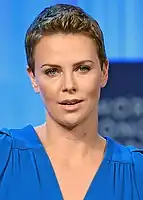 Charlize Theron, 2013
Charlize Theron, 2013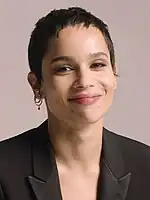 Zoe Kravitz with a short pixie cut, 2020
Zoe Kravitz with a short pixie cut, 2020
See also
References
- "Emma Watson Debuts Pixie Cut". StyleList. 5 August 2010. Archived from the original on 6 August 2010. Retrieved 16 June 2012.
- Hutchinson, Pamela (August 29, 2013). "The best pixie haircuts of all time: from Jean Seberg to Judi Dench". The Guardian.
- "short pixie cut, short spiky fringe and layered sides". Short-Hairstyles.com. Retrieved 16 June 2012.
External links
 Media related to Pixie cut at Wikimedia Commons
Media related to Pixie cut at Wikimedia Commons The dictionary definition of pixie cut at Wiktionary
The dictionary definition of pixie cut at Wiktionary